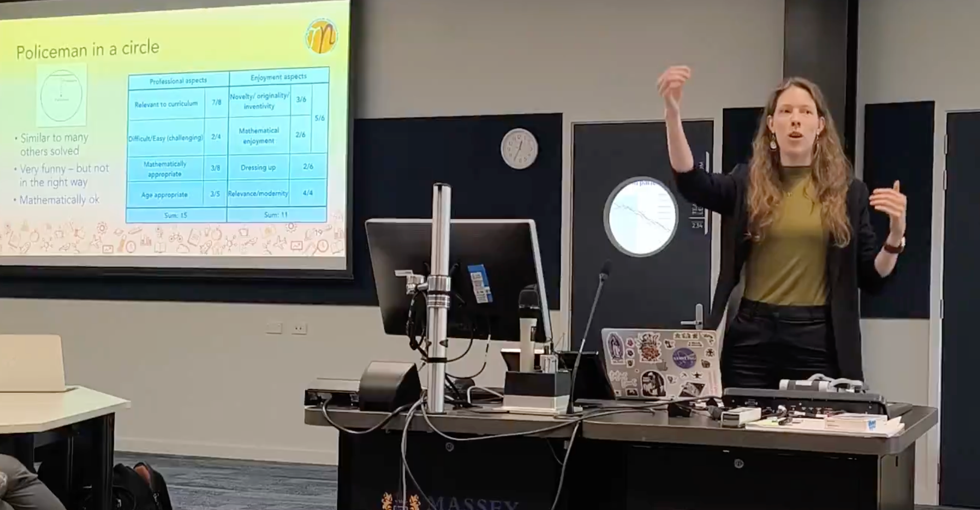Stirling Anna Krisztina at the PME 47 conference

17. July 2024.
2024. July 17. -
Nowadays, there is increased interest in integrating mathematical problem posing into classrooms. A number of international studies have shown that problem posing systematises and deepens the knowledge of students. This activity can promote students’ conceptual understanding, foster their ability to reason and communicate mathematically, and capture their interests and curiosity. Because of its personal nature, it better engages students. Also, variating and reformulating problems is an essential part of expert level problem solving – and problem-posing helps to practice it. Additionally, researchers argue that engaging students in problem posing can foster their creativity.
Examining students’ problem posing skills during mathematics classes is a rapidly growing, yet fairly new trend in didactics research. Different researchers mean different things when it comes to problem posing (Papadopoulos et. al. 2021). Thus, the concept of problem posing is not yet uniformly defined, and there are no uniform systems either for the way problem posing activities are tested, nor for the assessment of the tasks produced. In our research, we have developed a complex set of criteria for the evaluation of posed tasks and problems.
We examined the problem posing abilities of preservice mathematics teachers (N=58) at Eötvös Loránd University through two semesters, and the problem posing abilities of high school students in several Hungarian high schools (N=84). Based on the literature (Rosli et. al. 2015; Singer et. al. 2015) and our findings, we developed a complex set of criteria for the evaluation of posed tasks and problems, that could be applied to both students’ and prospective teachers’ posed problems. In the course of our research, we have therefore compiled and implemented a set of criteria for evaluating mathematical problems. In our talk we will describe this evaluation and illustrate its application with examples.


